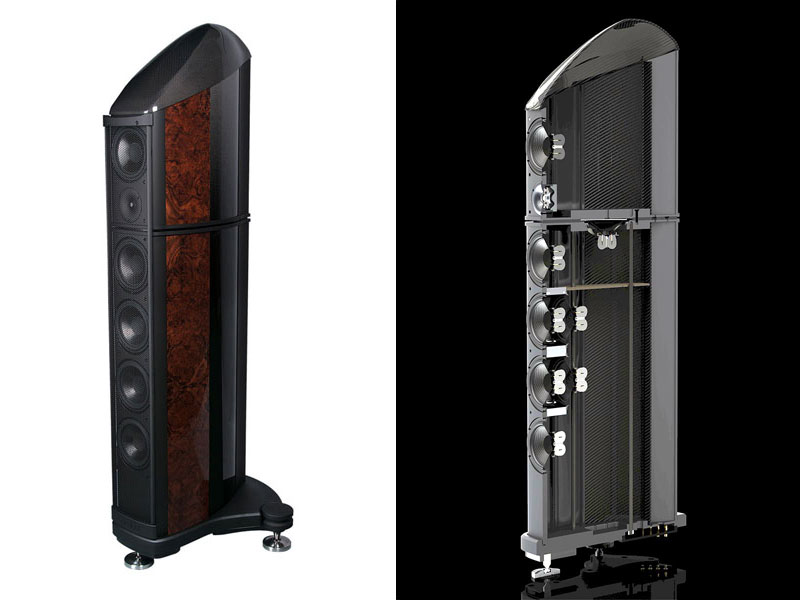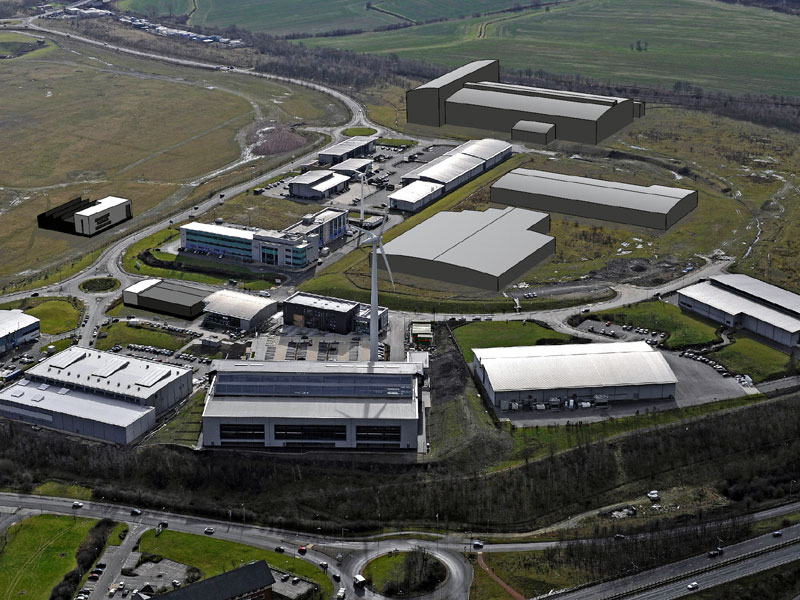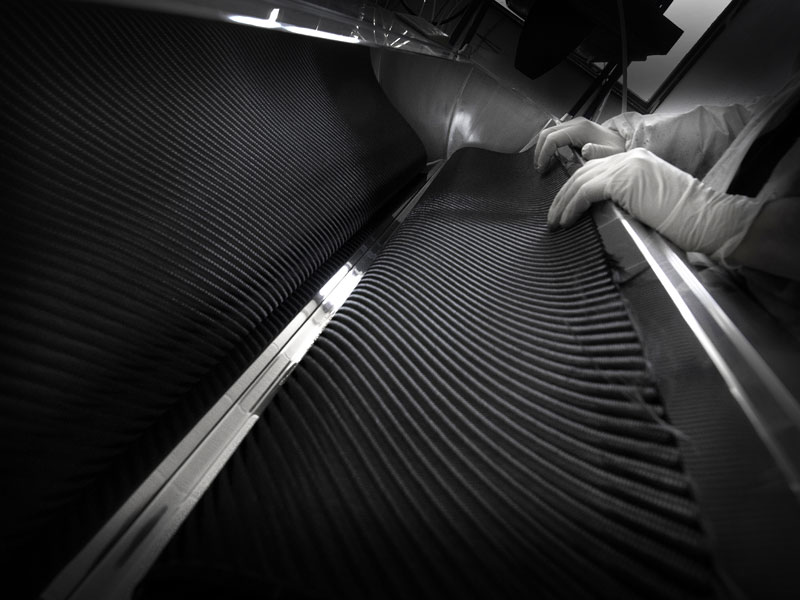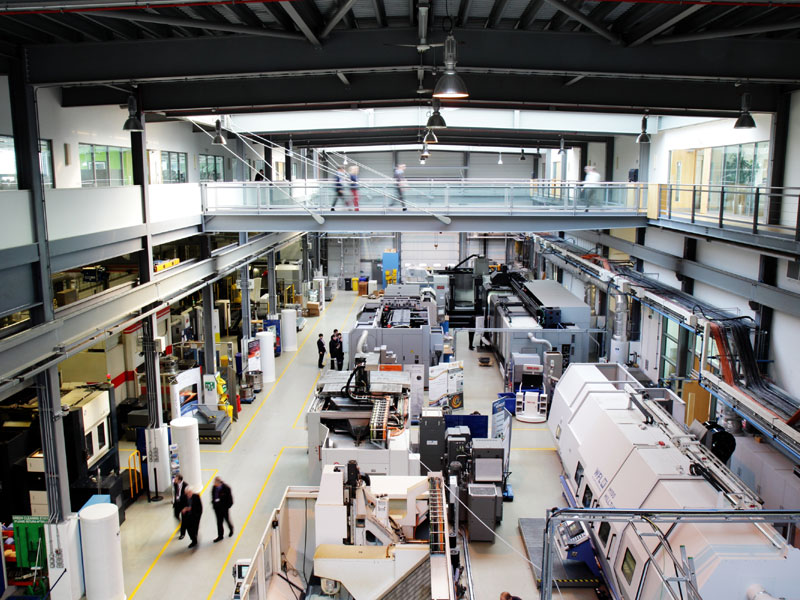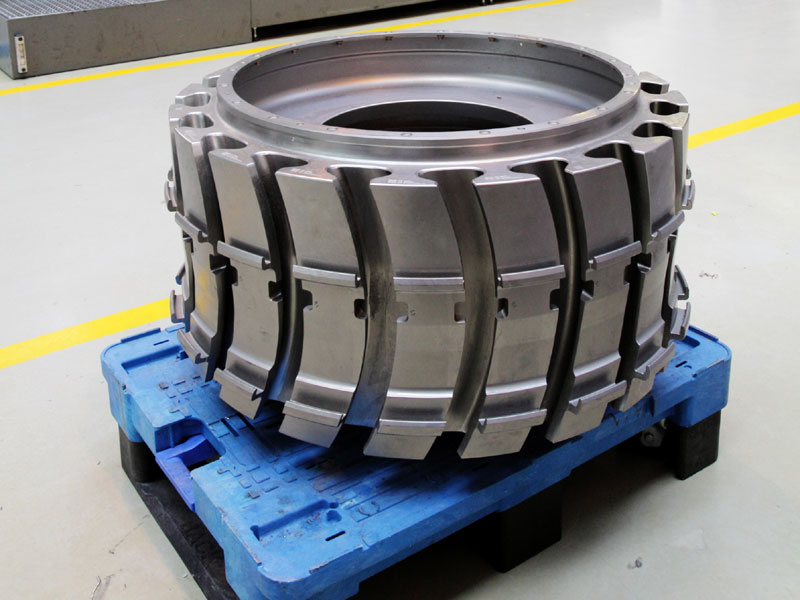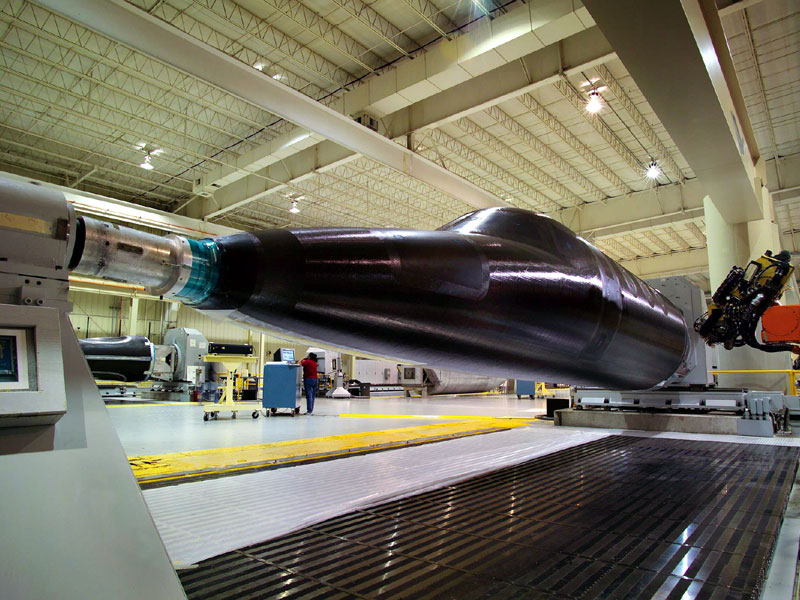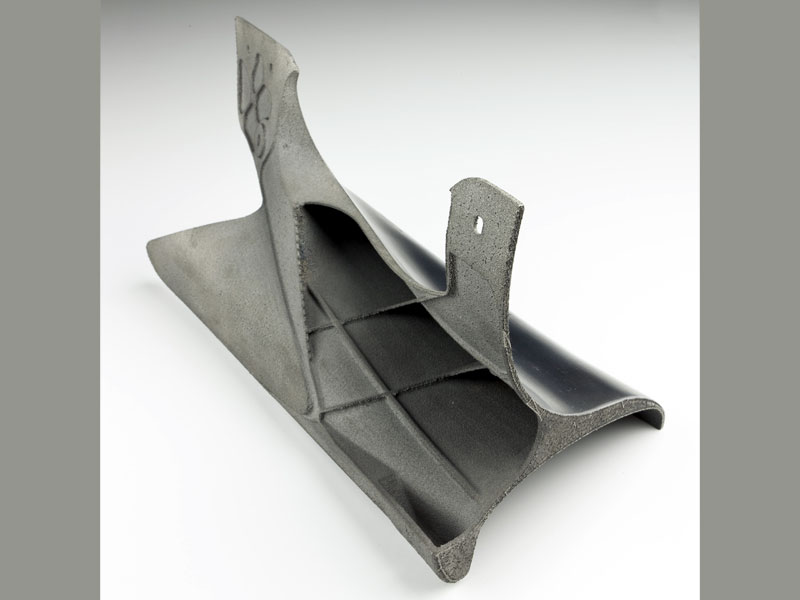Sheffield
Steel: Why History Matters for Wilson Benesch
But before we get to that, let’s just briefly recap what it is that makes the Cardinal so special. For any serious high-end loudspeaker, it is performance that matters. That depends on the designer’s understanding of the problems involved and in turn looking at the physical elements that constitute the product. The execution reflects the thinking behind that performance. Success depends on the ability to successfully translate the theoretical model into a physical entity. Now look at the construction of the Cardinal and the underlying Bauhaus linearity of the logic governing every manufacturing and design decision becomes clear, both as a function of the whole and an extension of the company’s existing, established approach. All very good in theory, what does that actually mean in practice? The Cardinal is a four cabinet, 18-driver stereo speaker system. Each pair of cabinets is constructed entirely from extruded and machined aluminum or carbon-fiber sandwich elements that involve a proprietary production process. The enclosure stands on a massive aluminum plate that incorporates large-diameter stainless-steel coupling spikes that can be adjusted from above using massive wheels, and sit in their own purpose-designed, bearing-coupled feet. The nine drivers in each cabinet are all built entirely in-house, using what the company claim to be a unique cone material and process. That in turn allows Wilson Benesch to precisely tailor the mechanical characteristics of the drivers, matching them to purpose so precisely that, although this is a four-way acoustical system capable of genuinely wide-bandwidth and low-coloration performance, its electrical crossover is a simple first-order, two-way design. Yet it achieves a level of top-to-bottom tonal and dynamic coherence that sets exemplary standards and delivers remarkable musical engagement and expression. Look at a picture, factor in the driver count and this will seem like a strange thing to say, but if ever a product embodied the less-is-more ethos, then this is it. The thinking and concept are incredibly straight-line, the choice of materials and construction designed to eliminate every unnecessary element and undesirable side effect that might impinge on the process, so much so, in fact, that virtually every element in the speaker, from the cabinet and drivers to the spikes and terminals, is manufactured in-house, giving the company complete control of form, function, consistency and tolerance.
An aerial view of the Advanced Manufacturing Park, showing existing and future buildings, around half of which are already finished. Now you understand why I describe the material and technological content of this speaker as both remarkable and a remarkable bargain. This level of control translates directly into serious infrastructure, investment and associated costs. Which brings us back to that question -- just how do Wilson Benesch do it? Good help is hard to find Many a hi-fi company starts with one man and a vision. In one sense, Wilson Benesch was no different and that man was Craig Milnes, recent graduate in fine arts with an engineering apprenticeship at British Steel. When the company was founded (it will celebrate its 25th anniversary this year) that first big idea was to apply the then newly emerging carbon fiber and other composite materials to the field of audio. Every successful business needs a little luck, and Wilson Benesch happened to be in the right place at the right time. Of course they had to see the opportunity, an opportunity that was the result not just of education but also Sheffield’s social and industrial history. The city was, quite literally, the blast-furnace and crucible of Britain’s industrial revolution, the heart of the steel industry and a major coal field to boot. But by the late 1980s the fight to dismantle the miners’ unions and the industry that went with them along with the collapse of UK steel production had left Sheffield a post-industrial wasteland, with horrendous levels of unemployment and social deprivation. Regeneration was needed, and the government made available grants to promote new high-tech manufacturing initiatives. Wilson Benesch were quick to seize the opportunity, and their first product, a turntable with a carbon-fiber suspended sub-chassis, appeared in 1990. The rest, as they say, is history, but the initial impetus provided by grant funding has never been forgotten, and as the high-technology manufacturing field has expanded in Sheffield, Wilson Benesch have become an integral part of the sector, benefiting from further research grants and more importantly, an expanding network of partners when it comes to manufacturing innovation.
Laying up carbon-fiber panels in the Wilson Benesch clean room. Although the main offices, machine shop and carbon-fiber manufacturing facility are located in the old Batchelor’s Soup factory, the company has recently opened a new development, listening and demonstration facility at the Advanced Manufacturing Park (AMP), jewel in the crown of Sheffield’s cutting-edge industrial development, formalizing a long-term association that has made major contributions to the company’s evolution and progress. Once you understand the AMP, you can start to appreciate the hows and whys of a product like the Cardinal.
Built on what was once a slag heap for the Orgreave Colliery, the AMP is both the pinnacle of and a living metaphor for Sheffield’s regeneration. An ultra-modern 100-acre industrial park, the site contains a number of individually owned and joint-venture facilities. As well as a huge Rolls-Royce manufacturing plant there are high-tech casting and nuclear manufacturing research facilities. But the building that really interests us here is the Advanced Manufacturing Research Center (AMRC), a joint Boeing/Sheffield University initiative that involves multiple partners and organizations with an interest in advanced materials technology of the type widely used in aerospace, defense and the likes of Formula 1. They don’t develop those materials at the AMRC; what they do is work out how to work with them, developing new techniques and applications.
Time for an example. The massive cylinder you see in the picture above is one part of the inlet element of a Rolls-Royce Trent jet engine -- used in a whole host of airliners, including the Airbus 330, 340 and 380 and the Boeing 777 and 787. It is roughly two-feet high and nearly three in diameter -- and it is machined from a single block of titanium, a material that is incredibly difficult, costly and time-consuming to work with. Machining something this complex from a malleable material like aluminum would be a challenge; working with the notoriously difficult and temperamental titanium, it becomes a major potential cost and consistency variable in manufacturing. The real problem of a product like this is the sheer complexity. Each of those long, curved grooves running down the side of the cylinder were taking 54 minutes to cut -- and there are 23 of them. That is almost a day of machining time just for those grooves, and that’s on top of all the other work required to turn a cubic block of metal into something this precise and intricate. Traditional machining techniques rely on the operator to gauge the depth and speed of the cut. Resonance developing in the work or the tool can prove catastrophic, destroying both the work and the tool bit itself -- with dire implications for the cost of manufacturing. To make matters worse, such failures always seem to occur on the last stage of machining, meaning that you lose all the time and effort already invested in that piece. Engineers at the AMRC were challenged by Rolls-Royce to improve the reliability and speed of the manufacturing process -- and reduce the costs. To do that they worked with the Rolls-Royce engineers to examine every aspect of the existing process, and they identified the onset of resonance as the critical factor. By drawing on the input and experience of other partner companies they were able to map the resonant characteristics of the work and define the critical depths and speeds of cut that generated resonant peaks, thus allowing the machine to avoid those dangerous areas. Now, rather like a cyclist increasing speed to escape wobble on a bike, the machinist no longer has to back off from the first onset of resonance but can work at a higher speed and with a deeper cut -- so long as they know what cut rates to avoid. In this case, the difference was between a cut depth of 2mm and 50mm -- and a total time to machine each groove of 90 seconds instead of 54 minutes! Not just that, the reliability of the process improved and it could be carried out on the existing machinery, so no new investment was required. It’s an example that underlines the AMRC’s role as both an innovator and an information exchange -- a powerful combination. But the AMRC is not only concerned with improving machining techniques. Major research is going into the creation of metal-matrix technologies, that combine carbon-fiber or composite elements with titanium or steel parts, as well as new and more consistent ways to form and employ carbon-fiber components. But let’s not forget that the raison d’Ítre driving this facility is not just to improve or diversify the applications of technology, it is also to look at improving the design and manufacturing process itself. To really understand the implications of that, it’s necessary to step next door to the Nuclear AMRC, where there is an advanced 3D virtual-reality design suite -- a facility that can not only render a product design "real," but can dismantle it or reassemble it before your very eyes, whilst also allowing you to reach out and grab elements in the design, offering them up, repositioning them, checking installation or access. More commonly used to check access and clearances for construction or maintenance on things like jet engines ("Are we actually going to be able to get that three-foot pipe through the access hatch and into position if and when we need to replace it?") it brings a whole new perspective to the structural design of something like a loudspeaker. So, when it comes to integrating a new midrange chamber into an existing cabinet, rather than having to prototype it first, just to find out whether it will fit -- and can be fitted -- the entire process can be trialed in advance, in a virtual world, making such developments quicker, far more precise and much more cost-efficient. Indeed, it is quite possible to prototype an entire product, assemble it, walk around it and appreciate how it looks and how different finishes might affect its appearance, all without making a single part. You can even incorporate gas-dynamic software to look at its mechanical and sonic behavior -- and the impact of any changes you make in the design. Thinking big, thinking small Access to the facilities and expertise at the AMP gives Wilson Benesch a phenomenal advantage in the development of new products and processes. But the real beauty of the arrangement is its mutually beneficial nature, so the major players who partner in and jointly fund the facility get to benefit from the specialist manufacturing and engineering knowledge that comes through the many smaller companies that are also involved. For years, carbon fiber has been a high-tech material that has been worked on an almost cottage-industry basis. By involving the artisan craftsmen responsible for short-run specialist products used in the likes of Formula 1 and the audio industry, large-scale manufacturing can learn and develop new techniques culminating, for example, in the process that "knits" the carbon-fiber fuselage for the Boeing 787 Dreamliner. It’s this symbiotic relationship that allows a tiny company like Wilson Benesch to sit at the same table as Boeing and Rolls-Royce, with access to hardware and expertise that are beyond most of our wildest dreams.
It’s a theme that extends beyond machining and composites technology, with Sheffield University in particular having a huge interest in and association with advanced manufacturing technology. We have all become familiar with 3D printing. More accurately referred to as additive manufacturing, it embraces a whole raft of technologies that build components layer by layer and the University is actively engaged in the task of using of these technologies and helping companies in applying them. The great benefit of additive manufacturing is the ability it gives designers to work with otherwise impossible shapes or structures, allowing the creation of intricately braced components or sub-assemblies. Imagine a tonearm that is both a one-piece construction and tapered and cross-braced down its entire length and you’ll start to get the picture. Such a rigid, lightweight structure is impossible to produce in any other way, yet additive manufacturing lets the designer work in polymers and a range of different metals including aluminum, steel and titanium -- and to do so with remarkable precision and repeatability. Consider the complex structures inside a loudspeaker’s motor or around a tweeter dome and the benefits become obvious. Remember where Wilson Benesch started out and the possibilities become really exciting. Reaping the benefits You don’t need to be around hi-fi and hi-fi companies for very long before you realize that it’s not that difficult to design a decent-sounding product. The real problems start when you try to manufacture it. Access to the technology and techniques, the engineering expertise and experience represented by the AMP, AMRC and Sheffield University has huge implications for the efficiency and cost structure of Wilson Benesch’s product development. In taking an idea and turning it into a product, the limiting factors are almost inevitably the availability and consistency of existing technology. Is there a driver available that can do the job or be modified to do it? But, if you have access to the materials that allow you to build and tailor your own drivers and the expertise that allows you to produce them consistently and cost effectively, then suddenly a huge barrier to achieving your goal has been removed. That is the real key to appreciating the importance of the Sheffield high-technology manufacturing culture and Wilson Benesch’s place within it.
An airfoil heat shield built to protect the body of a Formula 1 car from the heat of its exhaust pipes -- additive manufacturing in titanium alloy. But there’s another side to this story. To paraphrase the old adage, when it comes to audio, there are old companies and there are bold companies, but there are very few that are both old and bold. In the case of Wilson Benesch, the one man with the one good idea has traveled a long road -- and had a few more decent thoughts along the way, but it’s also a journey for which he’s had company. Look at Craig Milnes’ business card; his job title is Design Director. It’s his wife Christina who is Managing Director and responsible for the business, while more recently, son Luke has taken on responsibility for marketing. So, despite its relentlessly high-technology and forward-looking stance, Wilson Benesch is itself a composite structure, part cutting-edge, research-based manufacturer and part traditional family business -- in fact, not unlike that other successful Wilson dynasty. Few hi-fi manufacturers survive and grow consistently across two and a half decades -- and none of those that do manage it without facing crises and pitfalls along the way. It’s hard to overstate the extent to which the design and materials integrity that characterizes all Wilson Benesch products is a function of the designer not having to deal with the day-to-day intrusions, frustrations and inconveniences of actually running the company. It’s one thing to design a great product; it’s quite another to actually bring it to market and maintain its presence there. In reviewing the Cardinal I remarked on the clarity of purpose that underpinned its design and how clearly and succinctly that had been translated into the finished product. Now consider the Square Five, a floorstander from the other end of the range, one that is considerably more conventional -- at least in appearance. But those prosaically foursquare looks are deceptive, even actively misleading. It’s far from visually obvious, but the Square Five embodies the same overall concept, basic thinking and a great deal of the technology (and a fair slice of the performance) that makes the Cardinal so impressive -- at around one-sixth the price. If the materials/cost/performance ratio of the Cardinal is remarkable, the Square Five is little short of miraculous.
Craig and Christina Milnes (far left and right) flanking senior members of the Wilson Benesch design team. What both the Cardinal and the Square Five demonstrate is
the way that access to the AMP and its supportive technology and manufacturing culture
provides the ability to stay closer to the designer’s ideal path, accepting fewer
compromises in the materials, the form, the function and the performance of the finished
product. The fact that it’s likely to also save that designer (considerable) time,
effort and money along the way is a serious bonus -- at both ends of the price spectrum.
But in a world that values performance and trumpets the ethos of no-compromise design,
it’s that elimination of compromises that really counts. Looking at the physical
reality of the Cardinal or the Square Five, assessing the materials, engineering and
technology involved and the price being asked for the finished products (not to mention
the performance they each deliver) it is impossible to escape the conclusion that those
products that offer comparable levels of engineering integrity and completeness of design
either come from companies that are many times the size of Wilson Benesch and/or cost much
more than the Cardinal or Square Five. How does Wilson Benesch do it? With more than a
little help from their family and friends. |

